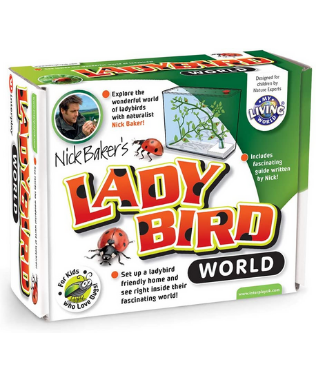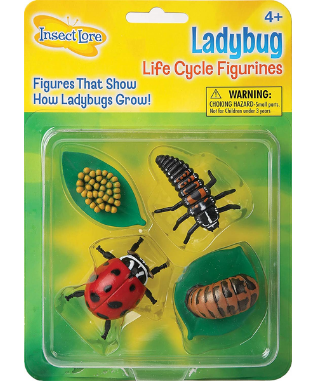After setting up our Ladybird World and then observing the metamorphosis process, we were finally ready to release the last of our ladybirds in to the wild.
Resources
- Insect Lore ladybird life cycle figurines
- Ladybird World – includes tools for handling ladybirds
Method
Over the previous week, we had released some of our ladybirds in stages. This is because the black harlequin ladybirds we had bred, prey on the red two-spot ladybirds, so, we didn’t want to leave them together for too long.
We had 5 ladybirds left, three harlequins and two two-spots. We took them outside in the garden so that they were free to fly away when they were ready.
The boys were very excited when the ladybirds climbed on to their hands.
Ioan’s red ladybird was unfolding it’s wings, ready to fly for the first time. Just as it was about to take off, Cian jumped on my back and I accidentally stopped filming, so we missed recording it!
Ioan was encouraging his second ladybird to take flight too.
Both boys love nurturing living creatures, but give Finny a frog, a chick or an insect and he really couldn’t be happier.
Finny worked out how many spots he had on his arm altogether.
Ioan’s last ladybird was reluctant to get off his hand. Here he’d finally tempted on to a leaf. Meanwhile, Finny’s remaining ladybird had made itself comfy on his ear.
DfES Early Learning Goals (2017)
Understanding the world
ELG 14 – The world:
Children know about similarities and differences in relation to places, objects, materials and living things. They talk about the features of their own immediate environment and how environments might vary from one another. They make observations of animals and plants and explain why some things occur, and talk about changes.
DfES Outcomes for EYFS and National Curriculum (2013)
Science Year 1 programme of study
Animals, including humans
- identify and name a variety of common animals including fish, amphibians, reptiles, birds and mammals
Science Year 2 programme of study
Living things and their habitats
- identify that most living things live in habitats to which they are suited and describe how different habitats provide for the basic needs of different kinds of animals and plants, and how they depend on each other
- identify and name a variety of plants and animals in their habitats, including micro-habitats























